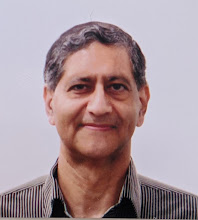The best thing about Bumrungrad is its marketing success. The credit goes to its American managers and marketers, who have not only promoted the hospital well in the media, but have also included slick designs and features, streamlined administrative processes and generally made the interface with the foreign patients very user-friendly and reassuring.
Bumrungrad tends to charge well for each of its services, and includes handsome markups for services it arranges through its local service partners. For example their airport "meet and greet" costs $40 and the trip to the hospital costs extra - about twice as much as for a luxury taxi engaged directly at the airport (or six times what an ordinary taxi charges.) But patients may not mind paying all these extras which are complimentary or included in package costs in other international hospitals. Instead, a cause for greater concern are some of their "substance" issues like their quality of treatment.
The Bumrungrad death in Feb. 2006 of the 23 year old American Joshua Goldberg has drawn a lot of attention. This could arguably have happened anywhere, but I too had concerns about the hospital way before that. Joshua's dad has made many allegations against Bumrungrad in his website directed against them, including engaging in a trade for body parts, and sacrificing patients for that purpose. In the absence of any facts to support this I don't set any store by such statements, and attribute them to the rage of a grieving father.
My guess is that Joshua died because of a negative response to one or more of the medications given to him. It's quite possible that negligence was involved and that Bumrungrad management tried to cover up mistakes made, or stonewalled an investigation. On the other hand it may not be the case, but here are the reasons why I am leery of their treatment quality and their practices:
- They don't seem to have outstanding doctors, particularly in areas of major surgery. I've read their policy is to hire primarily Thai nationals, which limits their talent pool. The bios of their doctors on their website is suspect as it mentions "fellowships" at US, etc. hospitals without mention of US residency (the US does not allow board certification or practice of medicine without US residency that spans several years.)
- They don't mention how many procedures they perform, especially major orthopedic or cardiac ones. This number is known to be positively correlated to quality. After Joshua's death and the resulting publicity they have changed their website quite a bit, but even earlier I had noticed that their treatment packages were generally for the minor procedures, e.g., angioplasties, with no mention of heart bypasses.
- They feed the media with claims that are clearly false or ridiculously exaggerated, though they are clever enough not to directly state these on their own literature or website. For example, the NY Times, the Pittsburgh Post-Gazette and other major publications quote them as having treated 58,000 Americans a year, of whom 70% come for major surgeries. A back of the envelope calculation shows they are exaggerating such numbers at least fifty-fold. For instance, see Tom Keesling's blog comments
- They don't put out any quality or outcomes data for major procedures, as some top Indian hospitals often do, and US hospitals are now increasingly required to disclose. Coming to think of it and given their declarations of patient volumes, even if Bumrungrad disclosed outcome statistics I wouldn't believe them unless it is independently verified.
- They don't have a pricelist of the standard procedures, unlike other top-tier hospitals popular with international patients. To get prices from Bumrungrad you have to go back and forth with one of their specialists assigned to your case. Their lack of up front estimates and transparent pricing makes me think, well, almost of used car salesmen. Or Bangkok's PatPong bargaining bazaar.
I've seen Bumrungrad from up close in addition to reading about it. I'd not go, or take a friend or loved one there, except if the outward patient experience (the tourism part of medical tourism) is a high priority. And the procedure is relatively simple, with inherently low risk. When I was visiting Bumrungrad their international lounge was a sea of women in black dresses and head scarves. I was told a large proportion of their foreign patients are women from the Middle East who come for nose jobs or other cosmetic treatments.
I worry because Bumrungrad on being exposed is likely to deeply undermine faith in other hospitals, including those in India, that are truly excellent and a better choice for medical tourists. The best outcome for the medical tourism industry would be for Bumrungrad to clean up its act quickly while acknowledging past mistakes, but I doubt this is going to happen with the current management in place.
